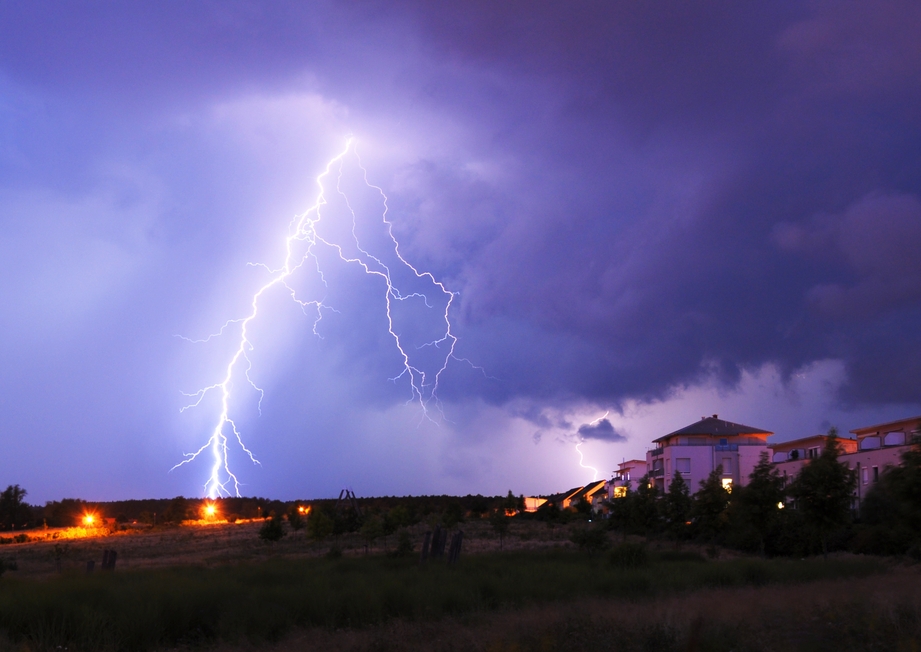

A funnel cloud forms in the centre of the vortex, although the strong winds circulate much further around it. Tornadoes are smaller, violent whirlwinds that can form below a cumulonimbus storm cloud, a region of intense vertical convection. The strongest, Category 5, storms include Hurricane Katrina in 2005 with winds of over 280 km hr -1. The 1970 Bhola cyclone was one of the worst natural disasters of all time, killing half a million people in Bangladesh and West Bengal largely as a result of such flooding, but it was far from the most powerful tropical cyclone, rating a relatively moderate Category 3. The average UK annual rainfall may fall in less than two hours from the clouds around the eye of the storm. Wind speeds of over 200 km hr -1 have been recorded around the centre of a storm, but devastation is mainly caused by flooding as a result of the surge in sea surface height and the intense rainfall. As they intensify they become driven by latent energy release from water vapour, which condenses to form the high storm clouds. Tropical cyclones form over very warm seas, typically in late summer and autumn in each hemisphere. Tropical cyclones, better known as hurricanes in the Americas and typhoons in the Far East, are massively destructive weather events that at lower latitudes, begin as weaker, low-pressure weather systems. Hurricane Katrina at peak intensity in the Gulf of Mexico on 28 August 2005. Here the prime means of heat transport changes from the longitudinally-symmetric over-turning Hadley Cells to wave-like motions, the surface manifestation of which are our familiar high and low pressure weather systems. Along the journey, energy is transformed into many other forms and the rotation of the Earth has a profound influence on the form the weather takes, especially at middle latitudes. This vast power supply is what drives the heat engine of the Earth’s atmosphere and oceans, and the resulting motions of warm air to cooler regions. For context, the largest nuclear power station has a capacity of 8 GW (8 × 10 9 W) and the total power consumed in all forms by humans today is estimated to be 18 TW (1.8 × 10 13 W), over 250 times less. Atmospheric heat transport peaks at about 5 PW (5 petaWatts or 5 × 10 15 W). This is because the atmosphere (and to a slightly lesser extent the oceans) transports heat from warmer to cooler regions. The Earth’s temperature does not show extreme variations, varying by less than 50° C between Equator and high latitudes, much less than on a body such as the Moon.

The Earth’s surface at the equator is face-on to the Sun’s light, but at a large angle to it near the poles where the same power falls over a larger surface area. On average, the atmosphere and surface absorb over 300 W m -2 in the Tropics but less than 100 W m -2 in Polar Regions. The remaining energy, roughly the equivalent of placing a small radiator every 2m in a lattice covering the Earth’s surface and running them continuously, is absorbed by the surface and atmosphere.īut the Sun’s power is focussed on the day side and, in particular, near the Equator. About one third of this energy is scattered straight back into space by clouds and ice on the surface. On average, the Earth receives 340 W m -2 from the Sun. Visible and ultraviolet light warms the Earth during the day, more strongly at low latitudes, but the Earth emits an almost exactly equal total amount of infrared radiation in all directions. Weather is the response of the atmosphere to the uneven pattern of heat energy that it receives. The Earth’s atmosphere is driven by heating from the Sun. But what explains these explosive events?

But it can also put on a truly sensational – and, often, deadly – show. The weather might seem like it creates weeks of dreary, grey drizzle.


 0 kommentar(er)
0 kommentar(er)
